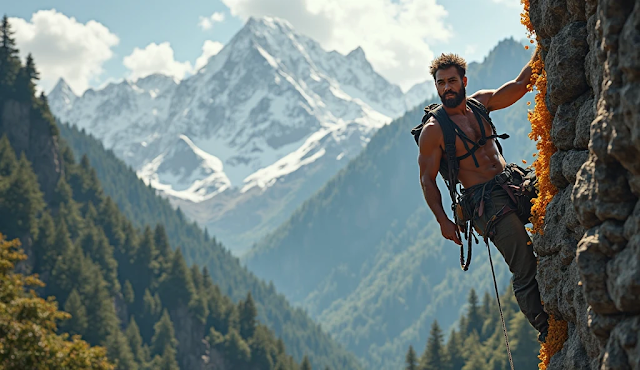Nepal’s Dhorpatan Hunting Reserve offers a rare blend of adrenaline-pumping adventure, pristine wilderness, and cultural immersion. As the only legal hunting reserve in Nepal, it attracts thrill-seekers and nature enthusiasts eager to explore its rugged terrain, diverse wildlife, and remote Himalayan landscapes. This guide dives into everything you need to know about planning your journey—including costs, location, and how to turn this expedition into a lifetime memory.
Where is Dhorpatan Hunting Reserve?
Situated in western Nepal, the reserve spans 1,325 km² across the districts of Rukum, Myagdi, and Baglung, nestled in the shadow of the Dhaulagiri Himal range. Its elevation ranges from 2,850 to 5,500 meters, offering dramatic contrasts between alpine meadows, dense forests, and snow-capped peaks. Key highlights include:
Coordinates: 28°38′N, 82°59′E.
Nearby peaks: Putha Himal, Churen Himal, and Gurja Himal.
Access points: Reachable via a 3-day trek from Beni or a helicopter ride from Kathmandu/Pokhara 27.
Why Visit Dhorpatan Hunting Reserve?
1. Controlled Hunting for Conservation
Established in 1987, the reserve balances sustainable hunting with wildlife preservation. Licensed hunters can pursue species like blue sheep (prized for their trophy horns) and Himalayan tahr, while revenue supports local communities and conservation efforts.
2. Rich Biodiversity
Home to 18 mammal species and 137 bird species, the reserve shelters endangered wildlife like red pandas, snow leopards, and cheer pheasants. Non-hunters can enjoy trekking, birdwatching, and photography in this ecological haven .
3. Cultural Immersion
The region is inhabited by Magar, Thakali, and Tibetan refugee communities. Visitors can experience traditional lifestyles, local festivals like Janai Purnima, and handicrafts in villages bordering the reserve .Cost Breakdown: Permits, Packages, and Logistics
1. Hunting Permits and Fees
Blue Sheep: ~$23,000 for a group of 2 hunters (includes permits, guides, and logistics).
Himalayan Tahr: ~$19,000 per group.
Additional Species: Musk deer, wild boar, and barking deer (prices vary).
Non-Hunter Fee: $5,000 per person for companions.
2. Entry and Visa Costs
Reserve Entry: NPR 3,000 (~$23) for foreigners; NPR 100 for Nepali citizens.
Nepal Visa: 50 for 30 days.
3. Package Inclusions
Most outfitters (e.g., Himalayan Wildlife Outfitters) offer 14-day packages covering:
Helicopter transfers (Kathmandu to Dhorpatan).
Tented camps with meals.
Professional guides and porters.
Trophy preparation and export permits.
4. Additional Expenses
Flights: 1,200 for international round-trip tickets.
Gear Rental: 500 for high-altitude equipment.
Travel Insurance: 300 (must cover adventure activities).
Best Time to Visit
Autumn (September–November): Clear skies, mild temperatures (12–20°C), ideal for hunting and trekking.
Spring (March–May): Blooming rhododendrons, warmer days (14–25°C), optimal wildlife sightings.
Avoid Monsoon (June–August): Heavy rains and landslides disrupt travel.
The Adventurous Journey: What to Expect
1. Hunting Expeditions
Challenges: High-altitude trekking (3,500–5,500 meters), unpredictable weather, and rugged terrain.
Daily Routine: 8–12 hours of tracking game like blue sheep across alpine meadows and rocky slopes 711.
2. Trekking and Wildlife Safaris
Routes: The Dhorpatan Trek passes through Jaljala Pass, Phagune Phedi, and Gurjaghat, offering views of Dhaulagiri and Annapurna ranges.
Wildlife Encounters: Spot Himalayan black bears, ghorals, and the elusive red panda .
3. Cultural Experiences
Village Visits: Engage with Kham Magar communities in Dhorpatan Valley.
Festivals: Attend the Janai Purnima fair at Dhorbaraha, a Hindu pilgrimage site .
How to Get There 278
From Kathmandu:
By Road: 12-hour drive to Baglung Bazaar, followed by a 3-day trek.
By Helicopter: 1.5-hour charter flight (~$5,000 round-trip).
From Pokhara: 8-hour drive to Beni, then a 3-day trek.
Tips for a Memorable Trip
Physical Preparation: Train for high-altitude hikes and long treks.
Pack Smart: Layered clothing, sturdy boots, binoculars, and a first-aid kit 17.
Respect Local Norms: Seek permission before photographing villagers.
Environmental Care: Follow Leave No Trace principles to protect fragile ecosystems.
Conclusion: A Lifetime Memory in the Himalayas
The Dhorpatan Hunting Reserve is more than a destination—it’s an expedition into Nepal’s untamed heart. Whether you’re drawn by the thrill of the hunt, the allure of rare wildlife, or the richness of Himalayan culture, this reserve promises unforgettable adventures. With permits, guides, and logistics streamlined for 2025/2026, now is the time to plan your journey into one of Asia’s last wild frontiers.
Ready to embark? Book your hunt or trek with certified outfitters and prepare for a saga of resilience, discovery, and awe-inspiring beauty.
Dhorpatan Hunting Reserve cost, Nepal hunting adventure, blue sheep hunting price, best time to visit Dhorpatan, Nepal wildlife safari, Dhorpatan trekking, Himalayan tahr hunting.


.png)



0 Comments